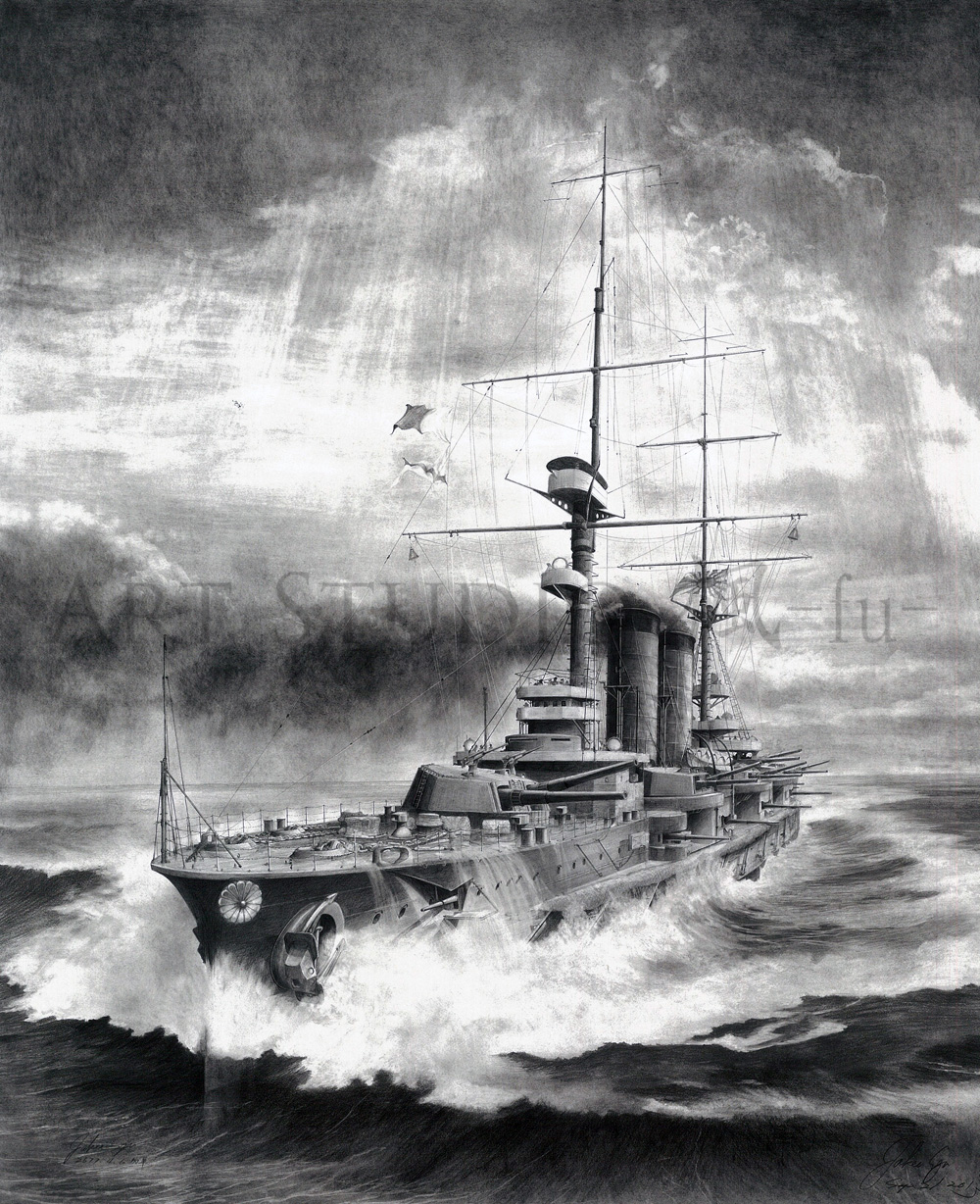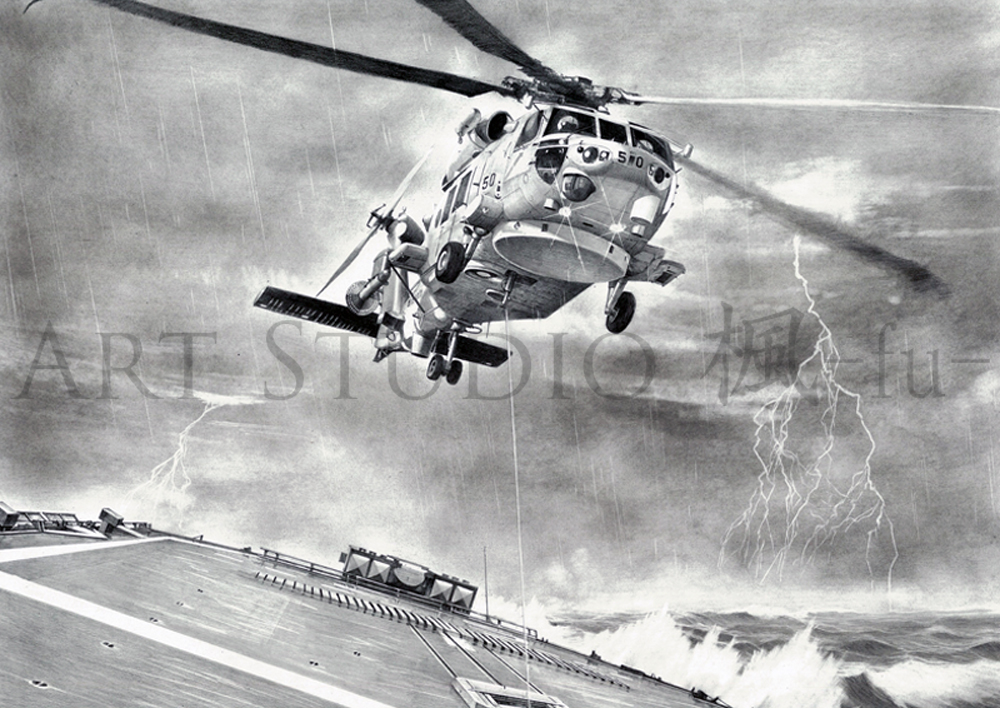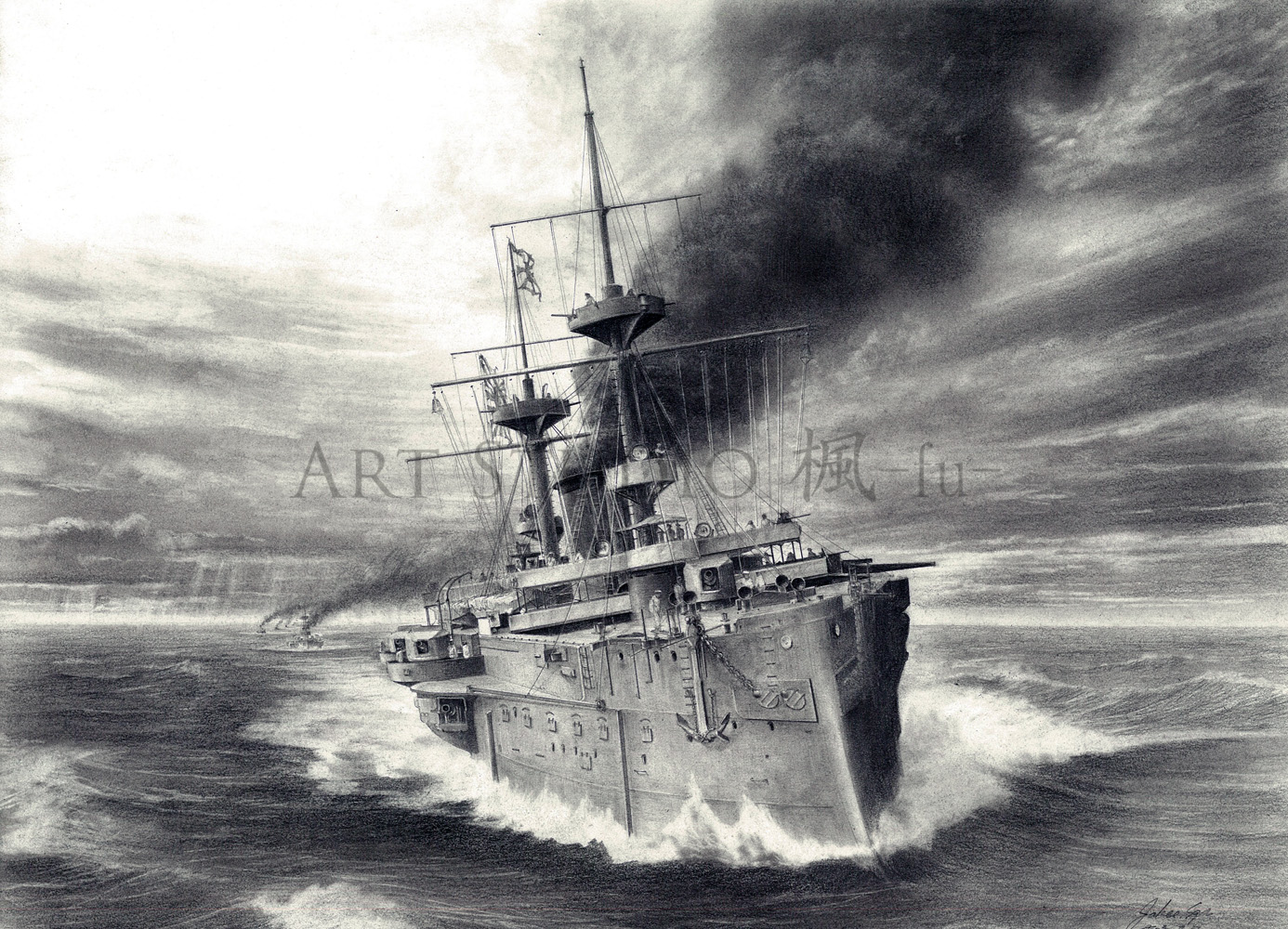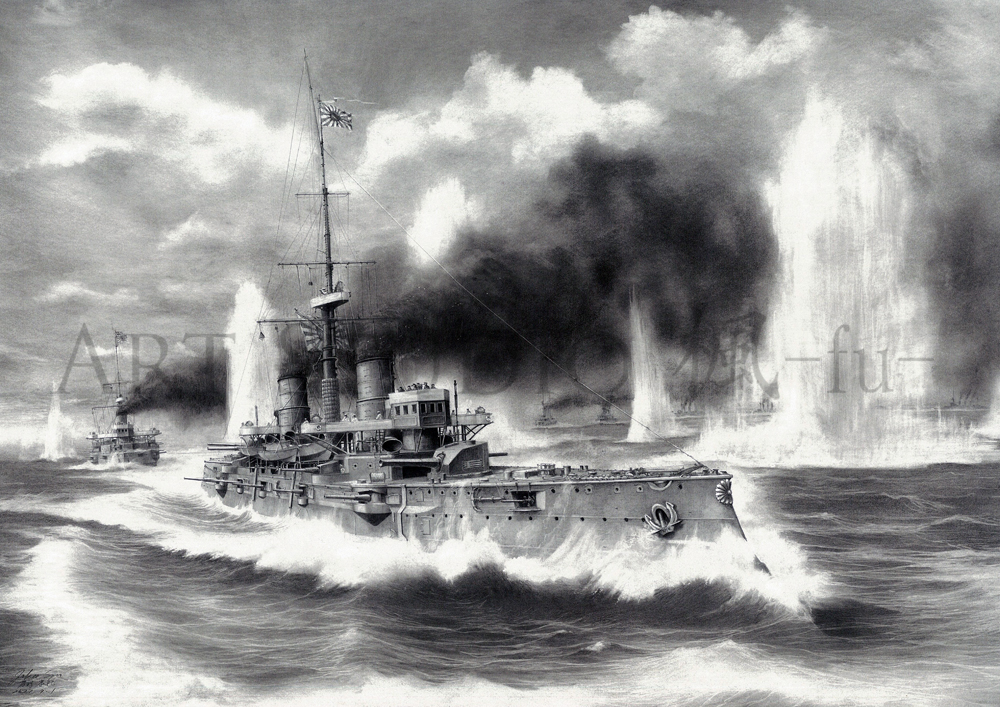薩摩は、日本が独力で完成させた最初の戦艦です。日露戦争時に主力戦艦2隻を失ったことは日本にとって大きな衝撃で、自力で戦艦を建造できる能力を確保することが急務となりました。
初の国産主力艦 筑波に続き、日本は常備排水量2万トンに迫る世界最大の薩摩を計画し、当時の新機軸を採用しつつ約4年の歳月をかけて建造しました。しかし、建造中にイギリスが戦艦ドレッドノートを完成させたため、完成前に旧式戦艦となってしまいました。とは言え、東洋の有色人種の国家が独力で戦艦を設計・建造したことは、列強諸国に大きな驚異を与えました。
第一次世界大戦では、太平洋上のドイツ領を攻略する作戦に従事しました。大正12(1923)年、ワシントン海軍軍縮条約締結により除籍されました。そして翌年9月2日、薩摩は実艦標的となり、房総半島野島崎沖で第五戦隊(由良、名取、長良)による射撃、並びに第五駆逐隊(朝風、春風、松風)による雷撃を受けて転覆し、千尋の海底へと消えていきました。
Battleship HIJMS Satsuma
The Satsuma was the first battleship completed in Japan. Since the loss of two main battleships in the Russo-Japanese War made a deep impact in Japan, it was decided to embark upon a crash program to develop the domestic ability to construct battleships. After the first major warship built in Japan, the Tsukuba, Japan planned to build the Satsuma, which would be the largest warship in the world at 20,000 tons displacement. She was to be built employing the newest technology, taking four years to construct. However, with the completion of the Dreadnought in Great Britain, she was rendered obsolete. Despite this, the design and construction of such a ship by an Asian country caused much admiration among the Great Powers of the West.
In the First World War she participated in operations against German colonies in the Pacific. In Taisho 12 (1923) she was decommissioned according to the stipulations of the Washington Naval Treaty. The Satsuma was designated as a target ship, and off Cape Nojima of the Boso Peninsula she was fired upon by the 5th Cruiser Squadron, consisting of the Yura, Natori, and Nagara, and torpedoed by the 5th Destroyer Squadron, the Asakaze, Harukaze, and Matsukaze. She capsized, and finally disappeared into the depths.










